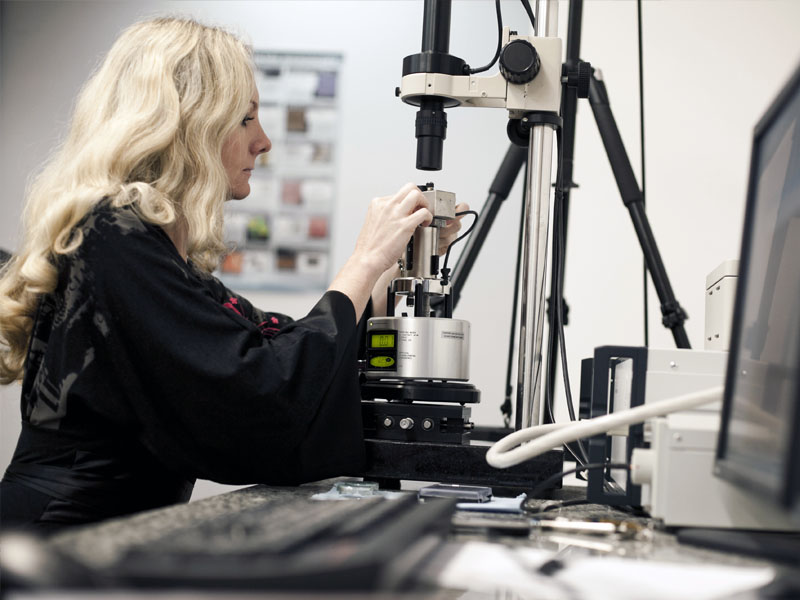
Research activity
Research at the Department of Biomedical Engineering is conducted in the following areas:
- biophysics of molecular aggregates,
- nanomedicine,
- biophysics and physiology of cell membranes,
- biomedical optics,
- physical and personalized medicine,
- methodology and applications of molecular research,
- computer simulations of biological systems,
- measurements and analysis of biological signals,
- biomedical electronics,
- medical informatics,
- measurement and diagnostic systems.
Research groups
| Head | Daoud Robert Iskander |
| Team |
Tomasz Grysiński Magdalena Kasprowicz Agnieszka Kazimierska Małgorzata Kostyszak Marcin Masalski Marcela Niemczyk Sylwia Olsztyńska-Janus Mateusz Popek Cezary Sielużycki Grzegorz Smołalski Agnieszka Uryga Simon Winter |
| PhD students |
Aleksandra Fojcik Aleksandra Kościółek Maria Miażdżyk Arkadiusz Ziółkowski |
| Research activity |
|
| Websites |
dri.pwr.edu.pl brainlab.pwr.edu.pl ibp.pwr.edu.pl/cs |
| Head | Marek Langner |
| Team |
Magda Przybyło Dominik Drabik |
| PhD students |
Maciej Łukawski Paulina Dałek Kamila Szostak-Paluch |
| Research activity | The laboratory conducts research in the field of design, optimization and analysis of the aggregation properties (liposomal) forms of drugs. LBAM is one of three laboratories included in the Wrocław Network of Biotechnology Laboratories of Lipid Aggregates. The laboratory is currently implementing two projects financed by the National Science Center: OPUS and PRELUDIUM. The aim of the project in the OPUS program is to create a new antiseptic molecule. In the PRELUDIUM project, advanced tools are developed to study the micromechanics of lipid membranes. In the years 2012–2016, the LIDOX project was implemented, financed by the NCBiR. The aim of the project was to create a prototype production line of liposome formulation of doxorubicin. The laboratory also provides research services commissioned by external entities. |
| Website | lbam.pwr.edu.pl |
| Head | Sebastian Kraszewski |
| Team |
Dominik Drabik Mateusz Rzycki |
| PhD students |
Beata Borysiuk Nadhiri Kaijage Daniel Wiczew |
| Research | More information here. |
| Head | Małgorzata Kotulska |
| Team |
Witold Dyrka |
| PhD students | Natalia Szulc |
| Research activity |
|
| Website | kotulska-lab.pwr.wroc.pl |
| Head | Marta Kopaczyńska |
| Team |
Marlena Gąsior-Głogowska Aleksandra Kaczorowska Paweł Piszko Halina Podbielska Przemysław Sareło Elżbieta Szul-Pietrzak |
| PhD students | Anna Szagdaj |
| Research activity | |
| Website |
| Head | Igor Buzalewicz |
| Team |
Agnieszka Ulatowska-Jarża Tomasz Walski |
| PhD students |
Aleksandra Pietrowska Mateusz Guźniczak Dominika Skrzela |
| Research activity |
The Quantitative Bio-Imaging & Biophysics Group (Bio-Quanty) specializes in interdisciplinary research in biomedical engineering, integrating advanced optical techniques, microfluidics, and nanotechnology. Its activities include:
|
| Website |
